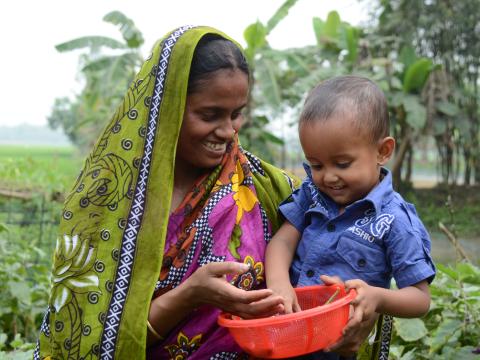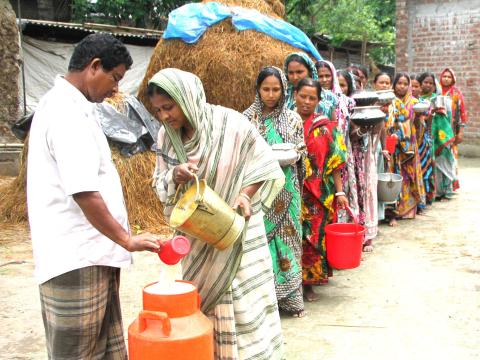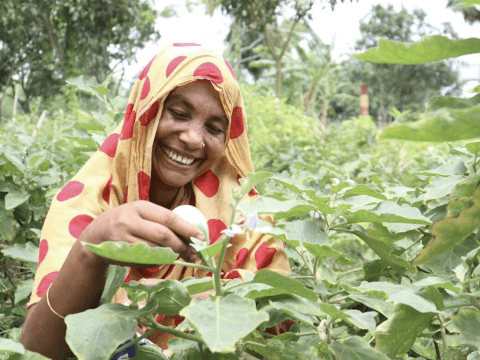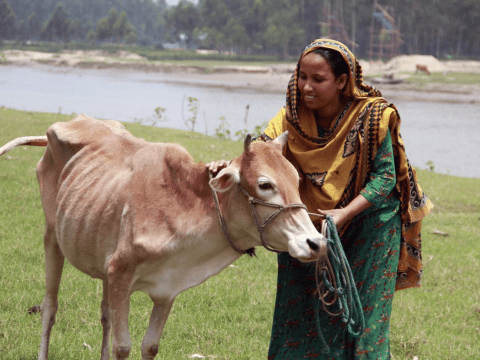Livelihoods & Food Security
Background
Poverty (intensified by COVID 19) increased and continue to increase the exposure to child rights violations including child labour and child marriage. 11,17,000 to 16,75,000 people in Bangladesh could become unemployed in 2020 (ADB and WB, 2020).
GOAL
Improved child well-being in targeted households with resilience and access to sustainable income sources.

Outcomes
- Strengthen food security system through diversified income sources and accessing social protection services to meet the basic needs of the children and community
- Promote sustainable alternate livelihood options for the families support the schooling of their children
Impact
OUR TARGET (2021-2025)
A total of 100,143 children will be addressed by livelihoods interventions.

Our Approaches
To help children and families live hunger-free tomorrow, World Vision and partners invest in community assets, livelihoods and longer-term development.
We do this by:
- Graduating the most vulnerable families out of extreme poverty – so that very poor families become economically self-reliant and have the dignity and means to provide for their own children.
- Strengthening food production, resilience and access to markets / financial services – so that farmers can produce more, better and more sustainable nutritious food for household consumption and marketing purposes.
- Promoting sustainable employment opportunities and market systems – so that communities have access to goods, services and employment opportunities through private-sector partnerships.

CORE PROGRAMMING MODELS
- Ultra-poor graduation (UPG): This approach takes people living in extreme poverty and insecurity on a two to three-year journey, during which they receive basic resources, financial education, technical training, life skill coaching and social support. By the end of the programme, participants ‘graduate’ into self-employment, earning an income that allows them to be self-reliant.
- Building Secure Livelihoods (BSL): The model provides a comprehensive pathway out of poverty for families to improve their livelihoods to levels that are productive and resilient enough to survive a range of shocks and stresses. This core model is composed of another subsidiary approach, the Local Value Chain Development (LVCD) model and Technical and vocational education and training (TVET).
World Vision supports the initiatives of the government and we work in partnership to strengthen the implementation of national nutrition programmes.
Through the Livelihoods & Food Security Programme, World Vision is taking steps to achieve the Sustainable Development Goals; SDG 1: No poverty, SDG 2: No hunger, SDG 5: Gender equality and SDG 8: Good jobs and economic growth. Simultaneously World Vision is contributing to three goals of the Rectangular Strategy included in Cambodia’s National Strategic Development Plan: Promoting Health and Integrated Nutrition, the Promotion of Livestock Farming and Aquaculture and Water Resources and irrigation system management.




